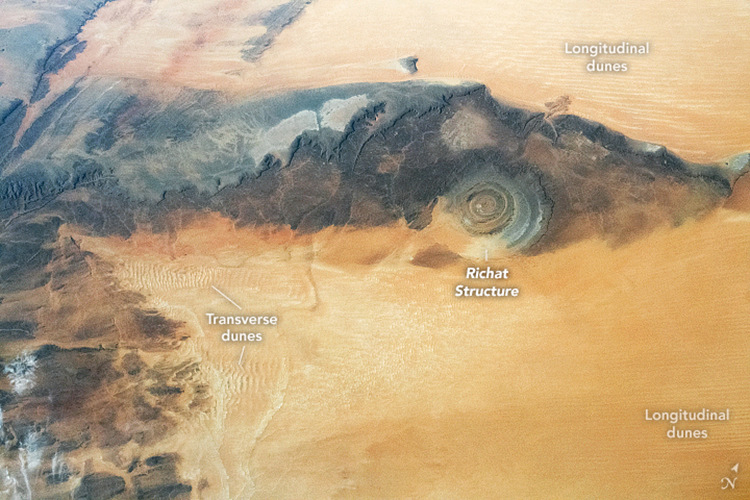
A geological marvel in the middle of a desert you can see from space
Geographical phenomena # 4: The Eye of the Sahara
The remarkable explained
By
From the air, it appears as a vast bull’s eye in the middle of the Sahara desert. The symmetrical geological marvel in the Adrar Plateau, a rocky, isolated region in Mauritania, is known as the Eye of the Sahara or, more recently, the Richat Structure.
Initially believed to be an impact structure resulting from a meteor, subsequent studies established its true nature as an uplifted geologic dome. It is 40 kilometres in diameter and exposes concentric rings of rock created by erosion with a centre dome nearly 20 kilometres wide.
The force of erosion has sculpted this structure, forming distinctive circular ridges known as cuestas and creating a remarkable circular pattern with sedimentary and igneous rocks. The rings have different rocks of various ages, and the ridges are mostly made of quartzite.
While locals have known about it for millennia, it is hard to comprehend fully from ground level. It was the first astronauts who drew scientific attention to the structure, assuming it was a meteor crater.
On-the-ground research discovered that it was, in fact, formed by erosion over millions of years. The erosion has exposed spectacular scatterings of rhyolites and gabbros – igneous rocks formed deep beneath the Earth’s surface.

Beyond its geological wonders, the Richat Structure holds archaeological significance. Excavations have uncovered evidence of human activity, including Acheulean and pre-Acheulian artefacts. Acheulean tools, associated with Homo erectus and Homo heidelbergensis (from around 2 million years ago), reveal a history of tool manufacturing and hunting activities.
The distribution of Acheulean tools serves as a historical record influenced by paleo-climatic factors. The Sahara’s fluctuating climate, experiencing shifts between wet and dry periods, played a role in shaping the lifestyles of early inhabitants, fostering a hunter-gatherer way of life.
Despite the scientific exploration explaining the geological and archaeological narrative of the Richat Structure, some still claim the Eye of the Sahara is evidence of the lost city of Atlantis. They claim it corresponds with Plato’s depiction of Atlantis.



